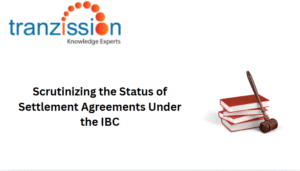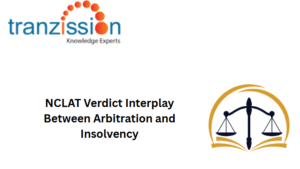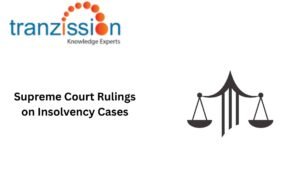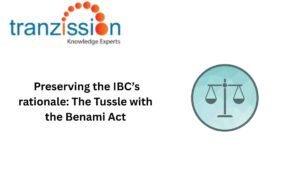
Role of NBFCs in the Insolvency Process
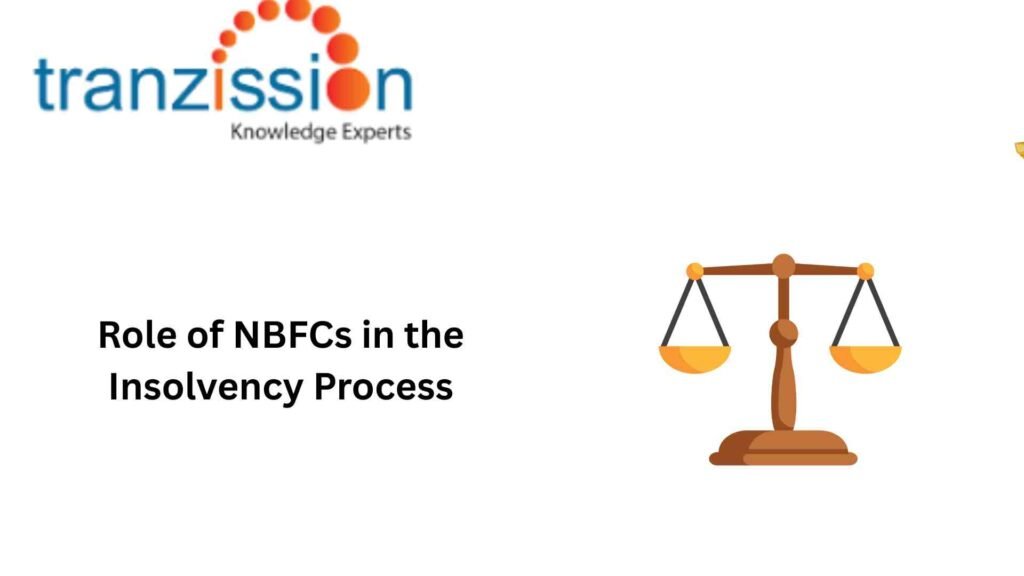
Table of Contents
Non-Banking Financial Companies (NBFCs) are financial institutions that provide financial services like lending, leasing, and insurance, but they do not have a full banking license. They operate without the full regulatory oversight of a bank, offering a range of financial products and services similar to banks but without accepting deposits from the general public. Similar to other corporate entities, NBFCs in the Insolvency Process can also undergo, but with some unique features.
NBFCs as Financial Creditors in Insolvency Proceedings
NBFCs can be considered financial creditors in insolvency proceedings under the Insolvency and Bankruptcy Code, 2016 (IBC). When providing financial services like loans, they become financial creditors to their borrowers, including:
Lending Activities and Exposure:
As NBFCs often extend credit to various sectors, they are significant financial creditors in insolvency cases. However, their claims and voting rights in the Committee of Creditors (CoC) can influence the outcome of resolution plans, which can affect the outcome of the insolvency process for the corporate debtor and other stakeholders.
Participation in the Committee of Creditors:
Section 21 of the IBC states that financial creditors comprise the CoC. As financial creditors, NBFCs have the right to be part of the CoC, contributing to decisions regarding the resolution process. Consequently, their expertise in financial matters can aid in evaluating resolution plans effectively.
Suggested reading : Role of e-auctions in liquidating assets
NBFCs Undergoing Insolvency Proceedings
Understanding the historical background of IBCs and the current insolvency framework for NBFCs:
Historical Exclusion from IBC:
Initially, the IBC excluded financial service providers (FSPs), including NBFCs in the Insolvency Process, from its purview. This raised certain concerns over systemic risks, and the unique nature of financial services led to this exclusion.
Inclusion via Section 227 and FSP Rules:
Under section 277, the Central Government is to bring FSPs under the IBC’s purview, after consultation with the relevant financial regulator. The Insolvency and Bankruptcy (Insolvency and Liquidation Proceedings of Financial Service Providers and Application to Adjudicating Authority) Rules, 2016 (“the Rules, 2016”) brought NBFCs with an asset size of Rs. 500 Crore or more under the IBC framework. This means that NBFCs meeting this asset size threshold can now be subject to insolvency proceedings, allowing for a structured resolution process for their financial distress.
Case Studies: T
he first NBFC to undergo insolvency proceedings was Dewan Housing Finance Limited (DHFL). The Reserve Bank of India (RBI) initiated the corporate insolvency resolution process (CIRP) against DHFL in November 2019. This action was taken due to concerns about governance and payment defaults by the company. This case set a precedent for future cases.
Challenges and Considerations
Regulatory Coordination:
NBFCs in the Insolvency Process are regulated by entities like the RBI, necessitating coordination during insolvency proceedings and resolution. When insolvency proceedings are initiated against NBFCs, it becomes difficult to balance regulatory requirements with insolvency procedures, which can be intricate.
Asset Valuation and Recovery:
NBFCs in the Insolvency Process often hold financial assets, whose valuation and recovery can be complex during insolvency, and fluctuations in financial markets can impact asset recovery values.
Read more: Summarising IBC Amendments of 2024
Future Outlook on NBFCs in the Insolvency Process
To streamline the NBFCs in the Insolvency Process, it is important for:
Continuous updates to the IBC and related regulations can enhance the insolvency process for NBFCs.
The Insolvency and Bankruptcy Board of India (IBBI) to train professionals to handle NBFC insolvencies effectively.
Implementing robust governance structures within NBFCs can mitigate insolvency risks, and transparent processes can bolster trust among creditors and investors.
Conclusion
NBFCs play a dual role in the insolvency landscape—as creditors and as entities subject to insolvency. As financial creditors, they have a major role in reaching a viable resolution plan to revive, rehabilitate, or restructure the corporate debtor. As financial entities, they may be involved in the insolvency process as a corporate debtor. This creates certain procedural or statutory hindrances, particularly for the insolvency professionals handling the case. To address these issues, it is important to adopt a nuanced approach, considering the unique nature of NBFCs, which is essential for effective insolvency resolution.

